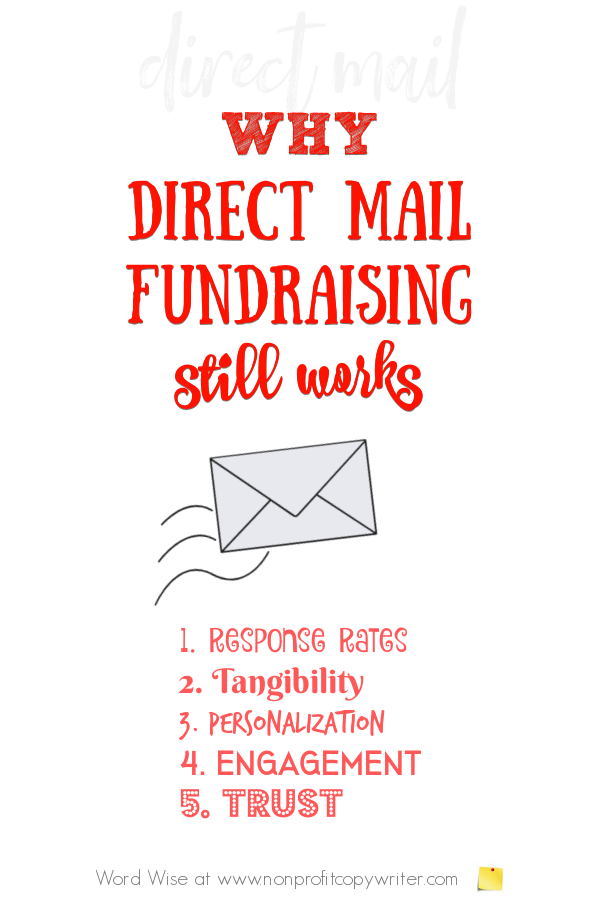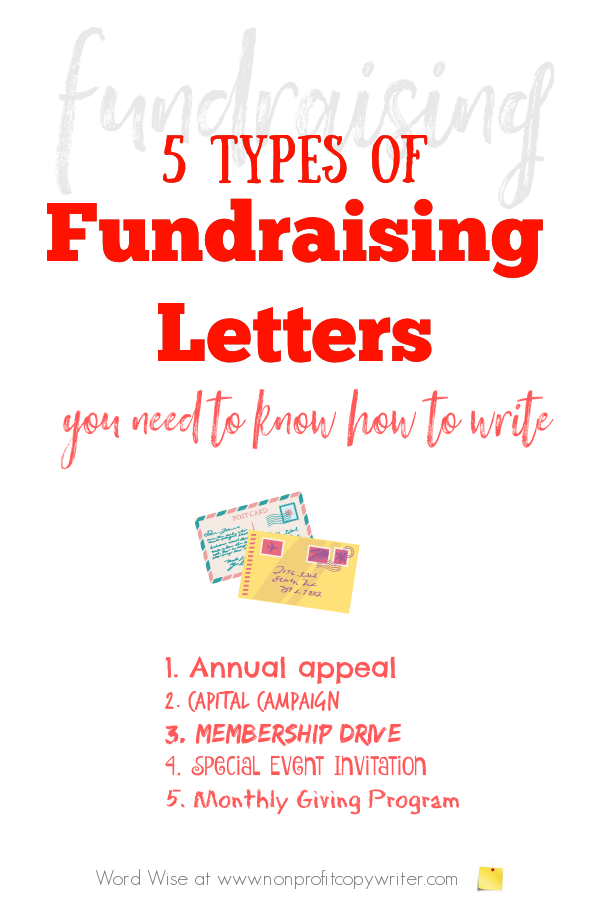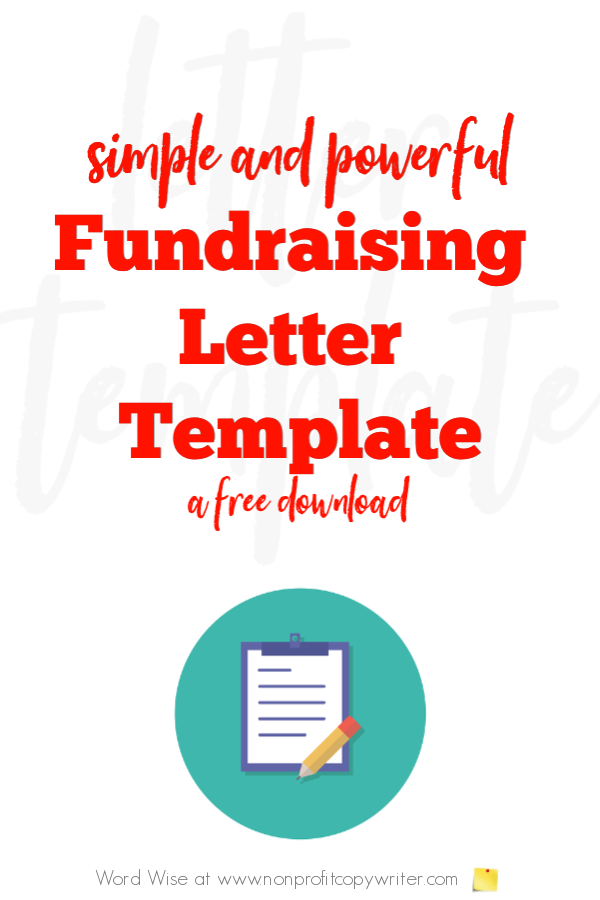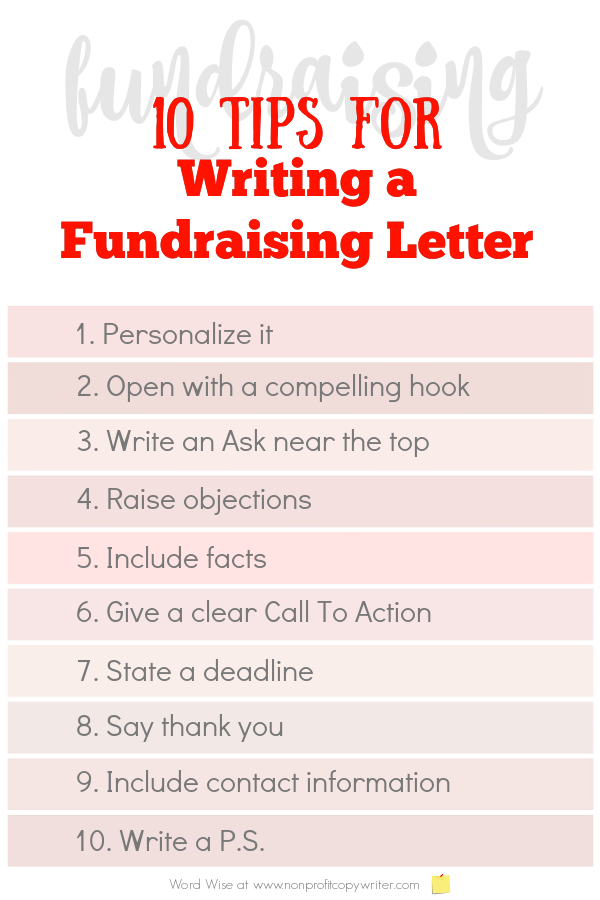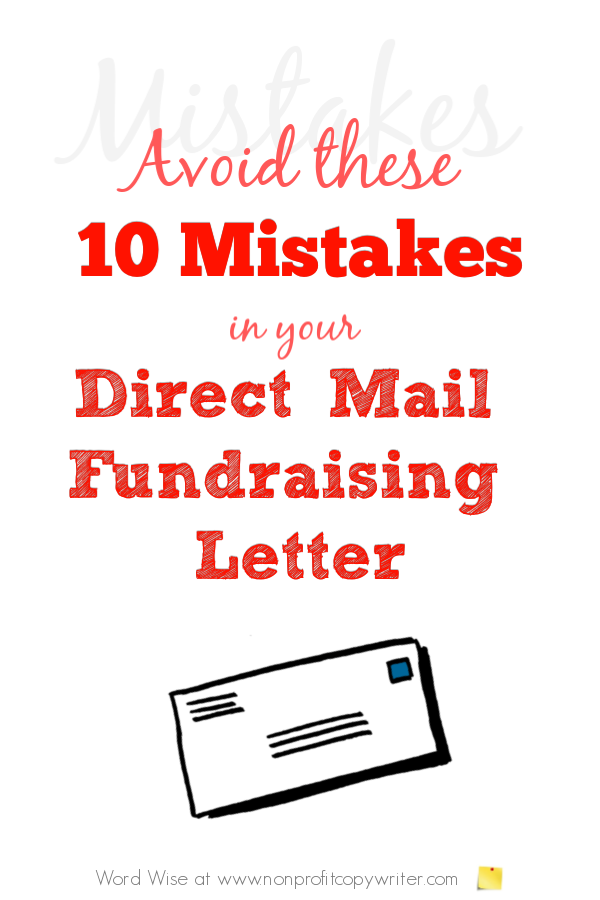Save Time: Get 5 Simple Writing Tips
you can put to use in 10 minutes
What Writers Need to Know About Direct Mail Fundraising Letters: A Primer
Award-winning writer Kathy Widenhouse has helped hundreds of nonprofits and writers produce successful content , with 750K+ views for her writing tutorials. She is the author of 9 books. See more of Kathy’s content here.
Updated 8.28.25
I’ve written hundreds of direct mail fundraising letters. I started doing so a couple of decades ago when everyone’s physical mailboxes were stuffed with personal letters, flyers, bills and solicitations. Even now, when digital is the way to go, some of my most successful writing projects have been direct mail packages that have pulled in thousands for clients.
Yes, it’s gratifying.
Doubters are shaking your heads. And newcomers may even wonder what it takes to write a print fundraising letter. If you’re a content writer, copywriter, nonprofit leader, or someone tasked with raising funds, you want to know more. First …
What is direct mail fundraising?
It’s a strategy that uses physical mail to solicit financial gifts. “Direct mail,” by definition, is sent straight to an individual on a mailing list, making it personalized.
Just as digital promotion is not the only way to raise money, neither is direct mail. Direct mail is one element that’s part of a complete campaign strategy. A successful fundraising campaign includes both print and digital components.
Why direct mail fundraising still works
Why go to the effort of writing a direct mail fundraising campaign plus the expense of sending it – if you won’t get return? Because In an era dominated by digital communication, direct mail remains a surprisingly effective fundraising method for nonprofit organizations.
- Response. From a fundraising standpoint, print promotion is a solid investment. Direct mail response rates for house lists average around 5% - 9% compared with email marketing response rates which average 1% - 3% … often with click-through rates below 1%.
- Tangibility. Open your mailbox, flip through your letters and flyers, and one return address catches your eye. So you tear open the envelope and read the letter. Physical mail is something donors can hold. It’s got a higher perceived value than an electronic message.
- Personalization. Segmentation allows you to send personalized letters to a portion of your house list or purchased list for specific causes or events. And when you write a letter, you can address the envelope to an real person, personalize the salutation, and even include the name on the response device.
- Engagement. Readers who get your letter spend an average of 20 minutes reading it. But an email in their inbox gets just a few dedicated seconds (if that). I print appeal is more personal and harder to ignore than an email (which can disappear with a simple “Delete.”)
- Trust. 56% of consumers consider print marketing to be the most trustworthy type of marketing, compared to 18% for digital ads . Donors need to feel confident that their contributions are going to a legitimate and worthwhile cause – and that their gifts will be used wisely.
Fundraising campaign, fundraising package, fundraising letter: what’s the difference?
The terms are often used interchangeably. But if you’re a content writer, you need to understand the difference so you can write the different elements in each,
Fundraising campaign
A fundraising campaign is a strategic, coordinated effort designed to raise a specific amount of money over a set period of time. It involves multiple activities and channels such as direct mail, email marketing, social media outreach, events, phone calls, and more.
A campaign can span several weeks to months, and sometimes even years. Its goal a larger financial target or a series of targets, often linked to a specific project, cause, or organizational need.
Examples: Annual fund campaigns, capital campaigns for building projects, endowment campaigns, and specific project-based campaigns.
Fundraising package
A fundraising package is exactly as the name implies: it’s a collection of items, including a letter. All those goodies tucked into one mailing provide more comprehensive information and make it easier for the recipient to understand the cause and donate.
A fundraising package aims to engage the recipient on multiple levels beyond just the initial letter – one reason it’s a common format for membership drives. Your direct mail fundraising package can include a brochure, booklet, inserts charts, graphs, testimonials, or infographics), lift notes (often from a celebrity, beneficiary, or supporter apart from the main letter’s signatory), a response device, and a reply envelope.
But at the bare minimum, it must have a fundraising letter, a response device, and a return envelope.
Examples: Annual fund campaigns, capital campaigns for building projects, endowment campaigns, membership drives, and specific project-based campaigns.
Fundraising letter
A fundraising letter is a single component of a fundraising campaign or a fundraising package. It's a written appeal sent to potential donors, typically via direct mail or email.
The letter focuses on a specific ask, providing information about the cause, the need for funds, and a call to action.
It’s a one-time effort – or part of a series – within the larger timeline of a campaign.
The goal? To solicit donations from recipients, often with a sense of urgency or a specific deadline.
Examples: Year-end appeal letters, special project letters, membership renewal letters, and letters targeting specific donor segments.
Types
of direct mail fundraising letters
If you write for nonprofits, you’ll be called upon to write different types of fundraising letters including …
- Annual appeals: these yearly solicitations are typically sent around major holidays or the end of the fiscal year.
- Capital campaigns: these fundraising letters focus on raising funds for specific projects, such as building renovations or new facilities.
- Membership drives: these letters encourage recipients to join the organization as members, often with specific benefits attached.
- Special event invitations: these letters invite readers to fundraising events, galas, or charity auctions, with an accompanying donation request.
- Monthly giving programs: these appeals encourage donors to commit to regular, monthly contributions.
Download your free copy of this fundraising letter template to get started writing your letter.
What your direct mail fundraising letter must have
I’ve seen effective 1-page fundraising letters … and letters that go on for 10 pages or more. The most common length? Two pages. I've created a direct mail fundraising template you can use to help you get started (download yours here). But no matter how long or short your fundraising letter, you must include 5 key elements.
- The problem. What need or challenge does your organization address? Your letter should name a specific challenge. “Three thousand children in our county will start this school year at an extreme disadvantage because their families cannot afford their school supplies.”
- The solution. How does your organization fix this problem – particularly with the program or campaign that you’re writing about in this letter? “This is the second year we have rallied our community to provide each of these children with a backpack and school supplies.”
- What you need. How much do you need to operate the program or provide the solution – and for how long? “We need “$120,000 to provide notebooks, calculators, crayons, and backpacks for these children.
- What the gift will do. “Your gift of $40 will provide a backpack for one of these children so they can start the school year strong. Some of them live right around the corner from you.”
- Urgency. What will happen if the prospect doesn’t get his checkbook out this instant? Offer a deadline. “Give your most generous gift by August 1 so we can get these backpacks into children’s hands before school starts.”
10 tips for writing a direct mail fundraising letter
1. Personalize the letter
Address the recipient by name. Your print company will use your house list mail merge to help with this. And where possible mention previous support and how the donor’s gift made specific differences for those you serve.
2. Open with a compelling hook
Tip: there’s no one single way to start a letter. There are dozens of first sentences that you can write – but no matter what, make it compelling. Use an emotional story, powerful statistic, or gripping quote to engage the reader right out the gate. Otherwise, your epistle is destined for the trash can.
3. Write an Ask near the top
Your first few sentences rank up there as one of the most important elements of an appeal (along with the carrier teaser and the P.S.) If it takes several paragraphs or even pages to get to your point, you have what's called a "delayed opening." By that time, you’ve lost your reader. And likely a gift. So state up front what you need. You’ll have plenty of chances to repeat yourself later in the letter.
4. Raise objections
You surprise a reader when you raise objections before they do. And you earn credibility when you address those objections with a satisfactory answer. Show readers both sides of the coin – that handful of weaknesses to your argument and how you refute them.
A recent University of Illinois studies found that two-sided arguments are more persuasive to readers than one-sided counterparts. “Maybe you think someone else can take care of this problem. But what if your small gift is the one that makes a difference for a child in your daughter’s kindergarten class?”
5. Include facts
Facts are persuasive. Statistics, research, examples, expert opinions, documentation – factual information backs up your claim that the need is real. When you present facts, you help the reader validate his emotional decision to give … refute the objections you’ve already raised … and prevent donor’s remorse. And you offer concrete, tangible reasons why a reader should give.
6. Give a clear Call To Action
Tell the reader what to do. Don’t assume that he will know. Use second person and give step-by-step instructions. “Fill in the enclosed response device, put it in the envelop with your gift, and drop it in the mail right now, while you’re thinking about it.”
7. State a deadline
Give a specific date. Include urgent language such as “now” or “as soon as possible.” And you can even explain why you’re on a schedule: “… so children can have what they need to succeed this year in school.”
8. Say thank you
Your reader has invested time in seeing your letter to the end. Thank him. Point to your shared passion for your cause and that you appreciate him. “You’ve got plenty of causes that need your support, but on behalf of the children we serve, thank you for your consideration”
9. Give contact information
Your name, physical address, email address, phone number, social media handles: provide clear contact details for donors to reach out with questions or for more information. You can even designate which is best.
10. Write a P.S.
It’s one of the most important elements of your letter. Today’s readers are pressed for time, so they conduct a quick skim of a letter before deciding to read the whole thing: the letter’s salutation first (they want to see their name), then the signature (“who is writing to me?”), and then the postscript.
In other words, the PS “is the first paragraph, not the last,” according to direct mail guru Siegfried Vogele. It occupies valuable real estate.
10 Mistakes to Avoid in Your Direct Mail Fundraising Letter
I’ve made a lot of mistakes when writing fundraising letters. Those mistakes meant lost opportunity and lower return for the ministries and organizations I serve. Yes, it’s frustrating.
That’s why I hope you will use this list of boo-boos to learn from what I have done wrong and avoid those mistakes.
1. No goal
“Please give to us.”
“We need your support.”
Vague messaging is one of the deadliest mistakes in fundraising writing. If your campaign has no goal, then why would a reader give? Worse, when you have no goal that means you haven’t thought clearly about what is needed. But a clear goal shows demonstrates that you’re serious about your work and you’re committed to using your donors’ resources wisely.
Identify a specific need or impact. What are you trying to accomplish with your direct mail fundraising letter? Write out one measurable goal you want to achieve. Then share that goal with your reader. Key word: measurable!
“Please give to our Backpacks for Kids campaign so disadvantaged local children can have school supplies.”
“We need your support so 3,000 local kids in poverty have pencils, paper, and notebooks for school.”
2. No story
“Just the facts” may work for a police investigation, but not in direct mail fundraising. You must include a story. People are persuaded to give or buy when you move their hearts. Readers respond when they read about a person who used your product or benefited from your service. Key requirement: your story must address a reader’s emotions.
3. No facts
Story with no facts: that’s a mistake.
You’ve heard objections. You’ve probably had a few of your own when you read content from other causes: “Well, that’s a feel-good story, but how do I know that this cause is providing real solutions?”
Avoid making the mistake that others do – the mistake that just appeals to your reader’s emotions. Back up your story with statistics and facts. (Here's how.) This way you’ll face down your reader’s objections right out the gate.
4. No "You"
One of the biggest mistakes you can make in your direct mail fundraising letter is to ignore your reader as you write. By “ignore,” I mean talk only about yourself (read: your organization.) Or worse, you ignore your reader when you’re unclear about who is reading or write to the wrong audience in the first place.
Your letter is not about you. It’s not about how great your ministry is. It’s not about the work you do. Your letter is about your reader and how she can feel good, be fulfilled, or be a part of something that is meaningful to her.
5. No white space
Long copy and short copy both have devotees. Yet both sets of fans agree: keep sentences and paragraphs short. Cluttered or unattractive layout discourages reading. And you want readers to read the entire letter, if possible.
6. No clear Call To Action
Another huge direct mail fundraising fail? Not telling the reader what to do. Give your reader clear instructions (these tips can help.) Walk her through the steps she should take: “Click here and give by Thursday.”
7. No urgency
Don’t assume that your reader sees the same urgency in your direct mail fundraising letter as you do. Give her a deadline. Tell her what will happen if she doesn’t respond. Include words like now, immediately, urgent, critical, and vital to move her to act.
8. No P.S.
That space after the signature? It’s valuable (and often wasted) real estate. Today’s readers are pressed for time, so they conduct a quick skim of a letter before deciding to read the whole thing: the letter’s salutation first (they want to see their name), then the signature (“who is writing to me?”), and then the P.S. In other words, the P.S. is the campaign’s first paragraph, not the last. Don’t leave that opportunity on the table.
9. No follow up
Your readers receive lots of mail and online solicitations. They need reminders in order to act. Send a recap email, postcard, text, letter – or all of them. Your follow up can also include a campaign status, such as, “We’ve reached 59% of our goal. Can you help close the gap?”
10. No tracking
Include tracking codes on your response device and tracking mechanisms on your email and website links. Ditto if you split test mailings or appeal elements, such as subject lines. Use a unique tracking code for each point of contact. This way what worked and what didn’t – and you can improve next time.
Your fundraising letter is a key to success
60% of consumers say they are extremely/very likely to respond to an advertising promotion when they see it across multiple channels. A well-written fundraising letter is the centerpiece of any fundraising campaign.
It’s got your campaign purpose and goal … your key story … facts and statistics to back up your point … a compelling ask. You can take content from your letter and use it for an accompanying brochure, email series, social media posts, videos …
“We’ve reached our goal – and succeeded it!” There’s nothing like hearing those words from a nonprofit leader at the end of a campaign. Your fundraising letter plays a central role in that achievement.
Now, you know the basics. Get out there and write a good one.
More Direct Mail Fundraising Writing TIps
Free Download: a Simple and Powerful Fundraising Letter Template ...
5 Opening Lines for Fundraising Messages ...
6 elements in a successful appeal letter writing format ...
Avoid the most common appeal letter trap ...
12 Tips for Writing Winning Asks: use these templates ...
3 appeal copywriting formulas ...
Fundraising Ask Secrets: how to propel prospects to give ...
Write a Call to Action in 3 words or less ...
Call to action: have you told your reader what to do?
How to write a P.S. with punch ...
More fundraising writing tips on our Pinterest board ...
Return from 10 Mistakes to Avoid in Your Direct Mail Fundraising Letter
to Nonprofit Copywriter home
As an Amazon Associate I earn from qualifying purchases.
Share This Page

Named to 2022 Writer's Digest list
BEST GENRE/NICHE WRITING WEBSITE


Stop Wasting Time!
Grab your exclusive FREE guide, "5 Simple Writing Tips You Can Put to Use in 10 Minutes or Less"





